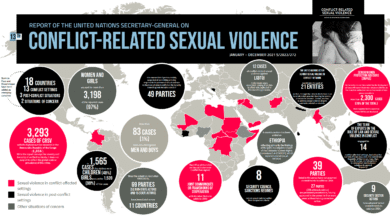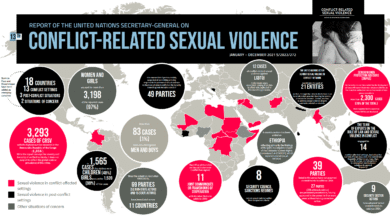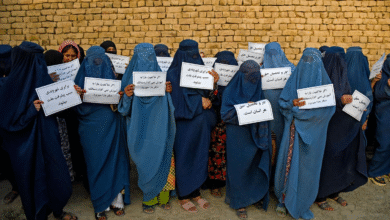Maternal Deaths: Urgent Action Needed to Reverse Crisis

Maternal deaths remain a critical issue in global health, with recent reports highlighting the urgent need for enhanced healthcare funding. Despite substantial progress in reducing maternal mortality rates over the past two decades, the ongoing cuts to aid threaten to reverse these achievements, jeopardizing the lives of countless women. In 2023 alone, an estimated 260,000 women succumbed to complications related to pregnancy and childbirth, underscoring the dire need for investment in midwives and community health initiatives. The COVID-19 pandemic has further exacerbated these challenges, illustrating how vulnerable expectant mothers can be during health crises. Addressing the systemic inequities in maternal health care is essential to ensure that every woman receives the support she needs during one of the most critical times in her life.
The challenge of maternal mortality, often referred to as maternal deaths, highlights a broader concern in women’s health during pregnancy and childbirth. This issue encompasses various aspects, including maternal welfare and survival rates, which are negatively impacted by financial cuts in healthcare and crises like the pandemic. It is essential to acknowledge that these deaths are not just statistics; they represent real lives affected by inadequate health services and a lack of support systems. Investing in healthcare professionals—especially midwives—is crucial in reversing this trend. Collaborative efforts and increased funding in maternal healthcare can significantly alter the current landscape, making it safer for mothers and their newborns.
The Alarming State of Maternal Deaths Global Health
Maternal deaths remain one of the pressing challenges in global health, accounting for an estimated 260,000 fatalities in 2023 alone due to complications during childbirth and pregnancy. Despite a significant reduction in maternal mortality over the past two decades, the progress has slowed alarmingly since 2016. This stagnation raises concerns as countries are compelled to cut vital health services amidst shrinking healthcare funding. If neglected, the risk of maternal deaths could surge, especially in regions already grappling with high poverty rates and conflict.
Furthermore, the inequalities in maternal health services across regions have become increasingly evident. While certain areas, such as sub-Saharan Africa, have seen strides in reducing maternal mortality rates, they still harbor approximately 70 percent of global maternal deaths. The need for enhanced investment in healthcare, particularly in maternal health, is crucial to reversing this trend. There is a pressing call to strengthen global health systems to ensure that every woman has access to essential reproductive and maternal healthcare services.
Investing in Midwives: A Path to Safer Deliveries
Investment in midwives is vital for drastically reducing maternal mortality rates and improving maternal health outcomes globally. As UN agencies emphasize, a significant portion of maternal deaths could be prevented with access to skilled healthcare providers, particularly midwives. By bolstering the midwifery workforce, countries can provide essential prenatal, delivery, and postnatal care that significantly enhances the safety of mothers and their newborns. Without the necessary funding and resources for midwifery training and support, many aspiring mothers will remain vulnerable during childbirth.
Moreover, midwives play a crucial role in educating communities about maternal health and safe childbirth practices. By advocating for health-seeking behavior among women and families in their respective communities, midwives can reduce the stigma and barriers that often accompany maternal healthcare. Their presence not only helps in providing clinical care but also fosters a supportive environment that empowers women, preventing avoidable deaths and ensuring healthier families. Hence, investing in midwives is a key strategy in combating maternal mortality and promoting global health.
The Impact of the Pandemic on Maternal Health
The COVID-19 pandemic has severely impacted maternal health, heightening the risk of complications during pregnancy and childbirth. Reports indicate that there were approximately 40,000 additional maternal deaths in 2021 as a direct result of the pandemic and subsequent disruptions to maternity services. This troubling statistic underscores the vulnerability of pregnant women during global health crises and illustrates the fragility of healthcare systems worldwide. It highlights the necessity for resilient healthcare infrastructure that can withstand emergencies while keeping essential maternal health services accessible.
Furthermore, the pandemic has exacerbated existing inequalities in maternal healthcare, particularly in underserved areas. Many women faced increased challenges in accessing prenatal and natal care due to lockdown measures and limited healthcare workforce availability. As the world moves toward recovery, it is crucial to evaluate the lessons learned from the pandemic. Ensuring that maternal health services remain prioritized during future public health emergencies is imperative for safeguarding women’s health and reducing maternal mortality.
Addressing Inequalities in Maternal Health Services
Inequalities in maternal health services continue to widen, disproportionately affecting women in low-resource settings. Regions like sub-Saharan Africa have made progress in reducing maternal mortality; however, significant disparities persist. Factors such as poverty, conflict, and lack of access to quality healthcare exacerbate these challenges, leading to higher maternal death rates in fragile or conflict-affected countries. The need for equitable healthcare policies that address these inequalities is pivotal in ensuring all women have the opportunity for safe pregnancies and childbirth.
Additionally, improving access to comprehensive maternal health services is essential in addressing these inequalities. This includes expanding healthcare funding to strengthen healthcare systems, enhance service delivery, and train more healthcare professionals who can cater to the unique needs of women in diverse settings. By tackling the root causes of maternal mortality, including economic and social determinants of health, we can create a more equitable environment where every mother has the chance to thrive.
A Global Responsibility to Reduce Maternal Mortality
The responsibility to reduce maternal mortality rates is a shared commitment that transcends national boundaries. According to Dr. Natalia Kanem of UNFPA, access to quality maternal health services is not a privilege but a fundamental right that should be guaranteed to all women globally. Strengthening international cooperation and advocacy for women’s health can create a global framework to systematically address maternal mortality and improve health outcomes across the board. Each country, regardless of its economic status, has a duty to prioritize maternal health in its public health agenda.
Moreover, building resilient healthcare systems that are well-resourced with trained professionals, particularly midwives and community health workers, is vital for safeguarding maternal health. Countries must invest in health infrastructure, address supply chain challenges, and develop policies that prioritize maternal health. By doing so, global health leaders can help ensure that the tragedy of preventable maternal deaths becomes a relic of the past, thereby contributing to healthier families and communities.
Childbirth in Crisis: Addressing Maternal Health in Emergencies
Humanitarian emergencies pose significant risks for maternal health, where the majority of maternal deaths occur. Nearly two-thirds of these fatalities happen in fragile states affected by conflict or instability. Pregnant women in these settings face alarming risks, with some regions showing a staggering one in 24 chance of dying from maternal causes. Addressing maternal healthcare in crisis situations must be prioritized to prevent these preventable deaths and protect the health of mothers and newborns alike.
Additionally, ensuring access to maternal healthcare services during emergencies must accompany broader initiatives to enhance women’s overall health and well-being. This includes integrating maternal healthcare with family planning services, nutritional support, and education on health risks. In crisis settings, women must receive comprehensive care that addresses immediate childbirth needs as well as their long-term health conditions. By building strong health systems that can respond effectively to emergencies, we can create an environment where mothers and children not only survive but thrive.
The Role of Community Health Workers in Maternal Care
Community health workers (CHWs) are essential components in the effort to reduce maternal mortality rates, especially in remote or underserved areas. These trained individuals can bridge the gap between healthcare facilities and communities, providing education and direct support to pregnant women throughout their reproductive journey. They help disseminate critical information on maternal health, prenatal care, and postpartum support, thus empowering women to seek the care they need during pregnancy and childbirth.
Moreover, CHWs can play a pivotal role in identifying high-risk pregnancies and facilitating timely access to advanced medical care when necessary. Their involvement not only fosters trust within communities but enhances the overall healthcare delivery system. Investing in the training and scaling of community health worker programs can significantly impact maternal health outcomes, leading to safer deliveries and, ultimately, fewer maternal deaths.
Strengthening Health Systems to Prevent Maternal Deaths
The call for strengthening health systems is critical in the global effort to prevent maternal deaths. Integrated policies that prioritize maternal and child health should be at the forefront of national health strategies. This includes enhancing healthcare funding to ensure that essential services remain available and accessible, especially in regions grappling with high maternal mortality rates. Ensuring a robust healthcare system is vital for providing the necessary support for mothers and their newborns.
Additionally, investment in health data systems is crucial for identifying and addressing maternal health disparities. By collecting disaggregated data, policymakers can better understand the factors contributing to maternal mortality and implement targeted interventions. Strengthening health systems through sustained investment and strategic planning is not merely an option but an urgent necessity to safeguard women’s health globally and contribute to broader goals of equity and social justice.
The Need for Sustainable Funding in Maternal Health Initiatives
Sustainable funding remains a cornerstone for effective maternal health initiatives globally. As recent reports indicate, funding cuts pose significant threats to progress made in maternal mortality reduction. Policymakers must recognize that investing in maternal health is not just a financial commitment but a moral responsibility that ensures women have the right to safe pregnancy and childbirth experiences. Increased funding is needed to support essential services, training programs, and community outreach endeavors.
Moreover, the disparities in health funding between countries accentuate the need for a collective global effort in supporting maternal health initiatives. High-income nations have a responsibility to assist low-income countries in building more resilient health systems capable of addressing maternal health needs. Long-term investments in facilities, healthcare personnel, and training can create a sustainable environment where maternal health is prioritized, ultimately leading to a dramatic decrease in maternal deaths worldwide.
Frequently Asked Questions
What are the current trends in maternal deaths globally?
Global trends indicate that maternal deaths have declined by 40% between 2000 and 2023, largely due to improved access to essential health services. However, the pace of improvement has slowed since 2016, and an estimated 260,000 women died from complications during pregnancy and childbirth in 2023, highlighting the pressing need to continue addressing maternal mortality.
How has the COVID-19 pandemic impacted maternal mortality rates?
The COVID-19 pandemic significantly exacerbated maternal mortality rates, with an estimated additional 40,000 deaths due to pregnancy or childbirth complications in 2021. This increase underscores how interruptions to maternity services during pandemics can jeopardize maternal health, necessitating stronger healthcare responses in emergencies.
What role do midwives play in reducing maternal deaths?
Midwives are crucial in reducing maternal deaths, as they provide essential care and support to mothers during pregnancy and childbirth. Increased investment in midwives, nurses, and community health workers is critical to ensure that every mother and newborn receive the healthcare they need to survive and thrive.
What is the impact of healthcare funding on maternal mortality?
Adequate healthcare funding is essential in preventing maternal deaths. Recent aid cuts threaten progress made in maternal health, especially in vulnerable regions. Sustained investment in maternal health services is necessary for building resilient health systems that can provide accessible care to at-risk populations.
What inequalities exist in maternal mortality rates across different regions?
There are significant inequalities in maternal mortality rates, particularly between regions. Sub-Saharan Africa accounts for around 70% of global maternal deaths due to high poverty levels and conflict. While some regions have seen progress, others have stagnated, highlighting the need for targeted interventions to address these disparities.
Why is it important to address maternal health in crisis settings?
Maternal health in crisis settings is critical, as nearly two-thirds of global maternal deaths occur in fragile or conflict-affected countries. Women in these areas face a much higher risk of dying from maternal causes, emphasizing the need for improved access to quality healthcare in emergencies.
What are the long-term implications of maternal deaths on families and communities?
Maternal deaths have devastating effects on families and communities, often leading to the loss of caregivers and economic instability. Children left without mothers are at higher risk of malnutrition and poor health outcomes. Reducing maternal mortality is therefore vital for promoting the health and well-being of future generations.
How can investment in women’s education impact maternal mortality rates?
Investing in women’s education is crucial for reducing maternal mortality rates. Educated women are more likely to seek healthcare, understand reproductive health issues, and make informed choices about their health and family planning, all of which contribute to lower maternal deaths.
| Key Point | Details |
|---|---|
| Aid Cuts Threatening Progress | Global aid cuts are jeopardizing the progress made in reducing maternal deaths. |
| Current Statistics | In 2023, an estimated 260,000 maternal deaths occurred, approximately one every two minutes. |
| Impact of COVID-19 | COVID-19 has been linked to an increase in maternal deaths, with numbers rising from 282,000 in 2022 to 322,000 in 2023. |
| Need for Investment | There’s an urgent call for investments in midwives and health workers to prevent maternal deaths. |
| Regional Disparities | Sub-Saharan Africa accounts for approximately 70% of global maternal deaths in 2023. |
| Challenges in Conflict Areas | Pregnant women in humanitarian crises face significantly higher risks, with a 1 in 51 risk of maternal death. |
Summary
Maternal deaths remain a critical concern globally, as aid cuts threaten the progress made in reducing these fatalities. The UN report highlights how urgent investment and resources are needed to address inequalities and ensure safe childbirth access, particularly in vulnerable regions affected by conflict and instability. Solutions exist to prevent these tragedies, yet continued focus and funding are crucial to safeguard the health of mothers and newborns.




